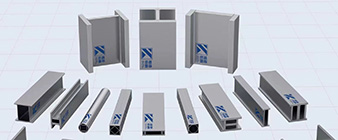The choice between EN 1.4301 (AISI 304) and EN 1.4307 (AISI 304L) stainless steel depends on the specific requirements of the application. Here are the key reasons to choose one over the other:
Higher Mechanical Strength:
EN 1.4301 has higher tensile strength, yield strength and hardness compared to EN 1.4307.
This makes it more suitable for applications requiring higher load capacities, such as structural components, machinery and equipment.
Improve wear resistance:
The higher hardness of EN 1.4301 provides better resistance to wear and tear.
This is beneficial for components that experience high levels of friction and mechanical stress, such as in industrial machinery and automotive applications.
Cost effectiveness:
EN 1.4301 is more widely available than EN 1.4307 and is generally cheaper.
This can be an important factor in applications where cost is a major consideration.
Enhanced corrosion resistance:
EN 1.4307 has better corrosion resistance, especially in welding areas, due to its lower carbon content.
This makes it the preferred choice for applications in corrosive environments such as the chemical, petrochemical and marine industries.
Improved solderability:
The lower carbon content of EN 1.4307 enhances its weldability and high efficiency.
This is beneficial for fabricated components and structures that require extensive welding, as it helps maintain the mechanical properties of the material in the heated area.
Suitable for welded structures:
The better weldability and corrosion resistance of EN 1.4307 in the welding area make it the preferred choice for welding components and structures.
This includes applications such as construction, storage tanks, pressure vessels and piping systems.
-
 2024-9-20 Laser welding fabrication process of Ti Gr 1 / 3.7025
2024-9-20 Laser welding fabrication process of Ti Gr 1 / 3.7025 -
 2023-12-11 Stainless steel structural profiles
2023-12-11 Stainless steel structural profiles -
 2024-9-27 1.4562 stainless steel hollow structural profile applications
2024-9-27 1.4562 stainless steel hollow structural profile applications -
 2024-9-25 What are the typical applications of Stainless Steel 430/1.4016 structural profiles?
2024-9-25 What are the typical applications of Stainless Steel 430/1.4016 structural profiles? -
 2024-9-29 2.4610 / UNS N06455 Nickel-based alloy hollow structural profiles for applications
2024-9-29 2.4610 / UNS N06455 Nickel-based alloy hollow structural profiles for applications -
 2024-4-15 Duplex Stainless Steel – A Simple Guide
2024-4-15 Duplex Stainless Steel – A Simple Guide -
 2024-9-24 310S stainless steel performance introduction
2024-9-24 310S stainless steel performance introduction



